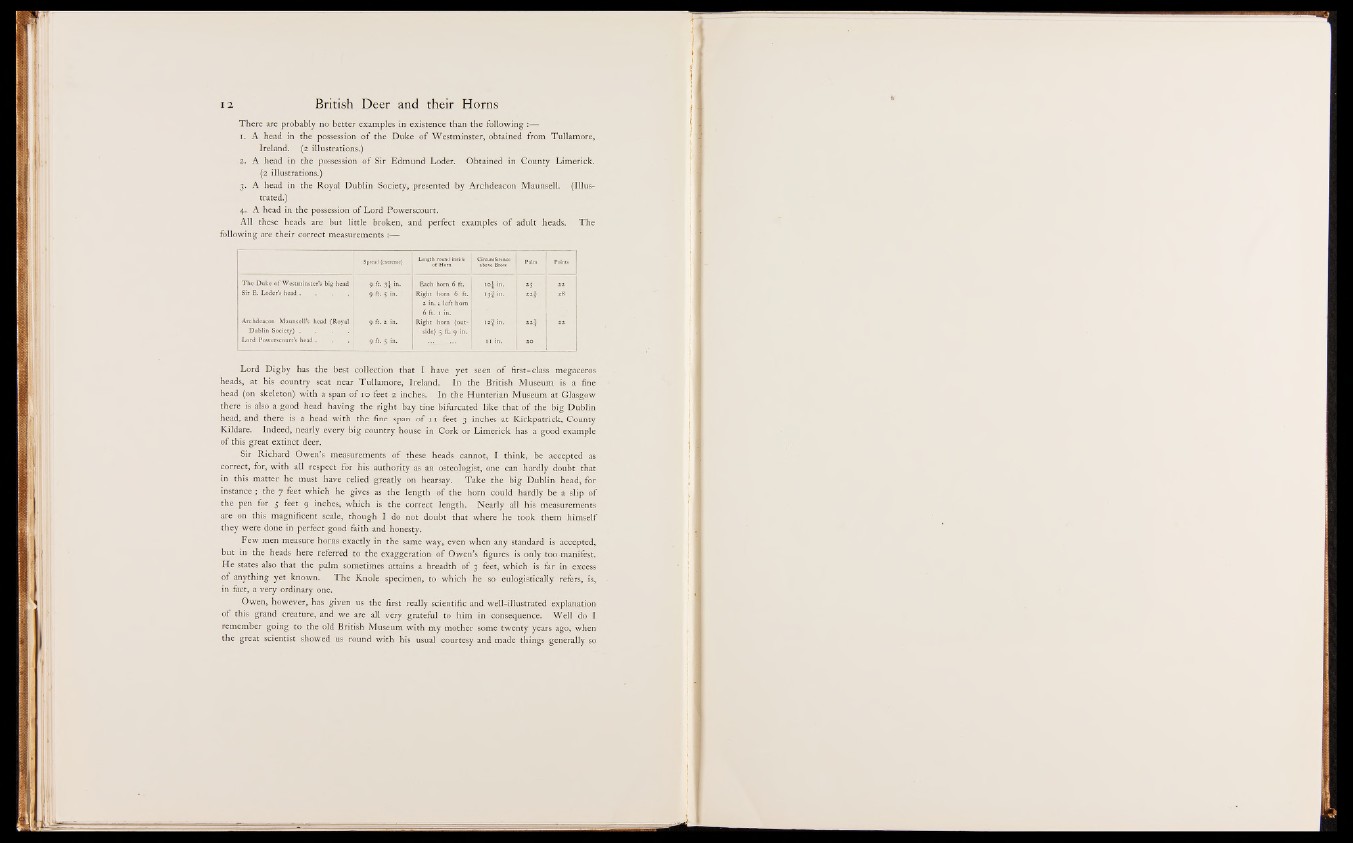
There are probably no better examples in existence than the following
1. A head in the possession o f the Duke o f Westminster, obtained from Tullamore,
Ireland. (2 illustrations.)
2. A head in the possession o f Sir Edmund Loder. Obtained in County Limerick.
(2 illustrations.)
3. A head in the Royal Dublin Society, presented by Archdeacon Maunsell. (Illustrated.)
4. A head in the possession o f Lord Powerscourt.
A ll these heads are but little broken, and perfect examples o f adult heads. The
following are their correct measurements :—
Spread (extreme) Lengtho fr oHuonrdn inside Caibrcouvme fBerroenwce Palm
The Duke of Westminster’s big head 9 ft. 3J in. Each horn 6 ft. io£ in. 2c 22'
Sir £. Loder’s head . 9 ft. S in. ' Right horn 6 ft. 13J in. 22A 28
Archdeacon Maunsell’s head (Royal 9 ft. 2 in.
2 in.; left horn
1 - 6 ft. 1 in.
Right horn (out-. 12^ in.
Dublin Society) .
Lord Powerscourt’s head . . 9 ft. s in.
side) 5 ft. 9 in.
« '
Lord Digby has the best collection that I have yet seen o f first-class megaceros
heads, at his country seat near Tullamore, Ireland. In the British Museum is a fine
head (on skeleton) with a span o f 10 feet 2 inches. In the Hunterian Museum at Glasgow
there is also a good head having the right bay tine bifurcated like that o f the big Dublin
head, and there is a head with the fine span o f 11 feet 3 inches at Kirkpatrick, County
Kildare. Indeed, nearly every big country house in Cork or Limerick has a good example
o f this great extinct deer.
Sir Richard Owen’s measurements o f these heads cannot, I think, be accepted as
correct, for, with all respect for his authority as an osteologist, one can hardly doubt that
in this matter he must have relied greatly on hearsay. Take the big Dublin head, for
instance ; the 7 feet which he gives as the length o f the horn could hardly be a slip o f
the pen for 5 feet 9 inches, which is the correct length. Nearly all his measurements
are on this magnificent scale, though I do not doubt that where he took them himself
they were done in perfect good faith and honesty.
Few men measure horns exactly in the same way, even when any standard is accepted,
but in the heads here referred .to the exaggeration o f Owen’s figures is only too-manifest.
He states also that the palm sometimes attains a breadth o f 3 feet, which is far in excess
o f anything yet known. The Knole specimen, to which he so eulogistically refers, is,
in fact, a very ordinary one.
Owen, however, has given us the first really scientific and well-illustrated explanation
o f this grand creature, and we are all very grateful to him in consequence. Well do I
remember going to the old British Museum with my mother some twenty years ago, when
the great scientist showed us round with his usual courtesy and made things generally so